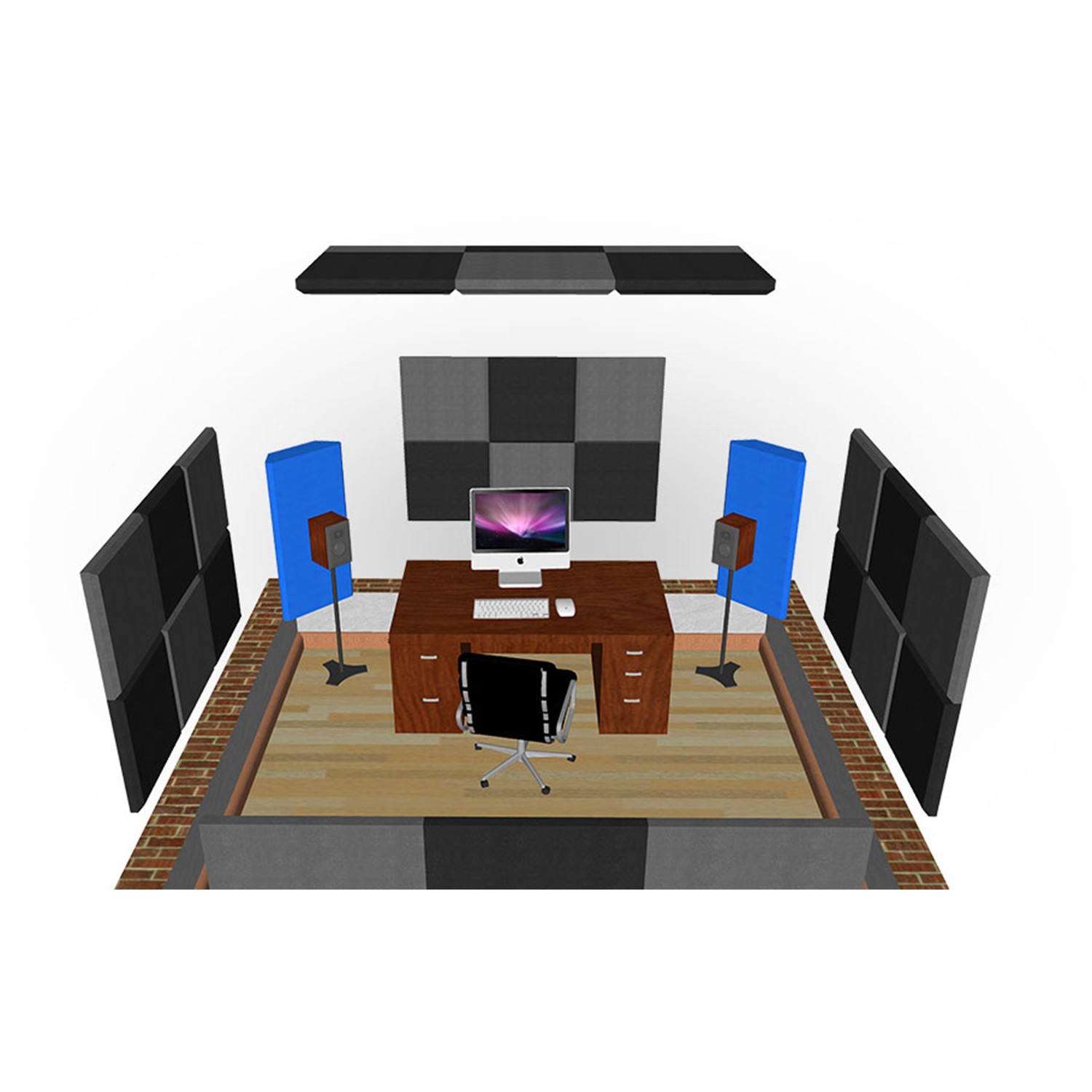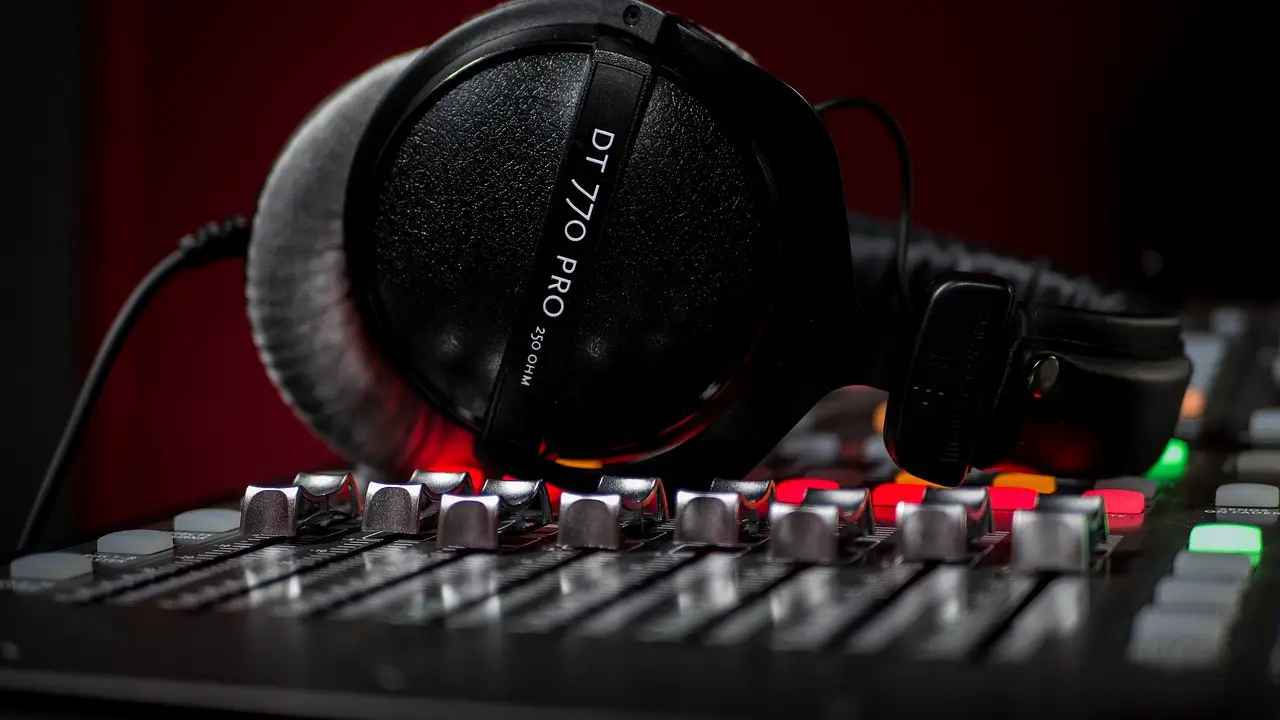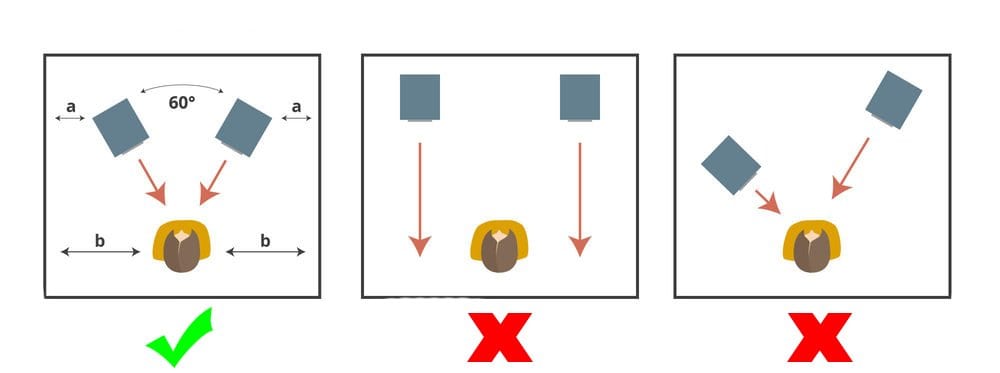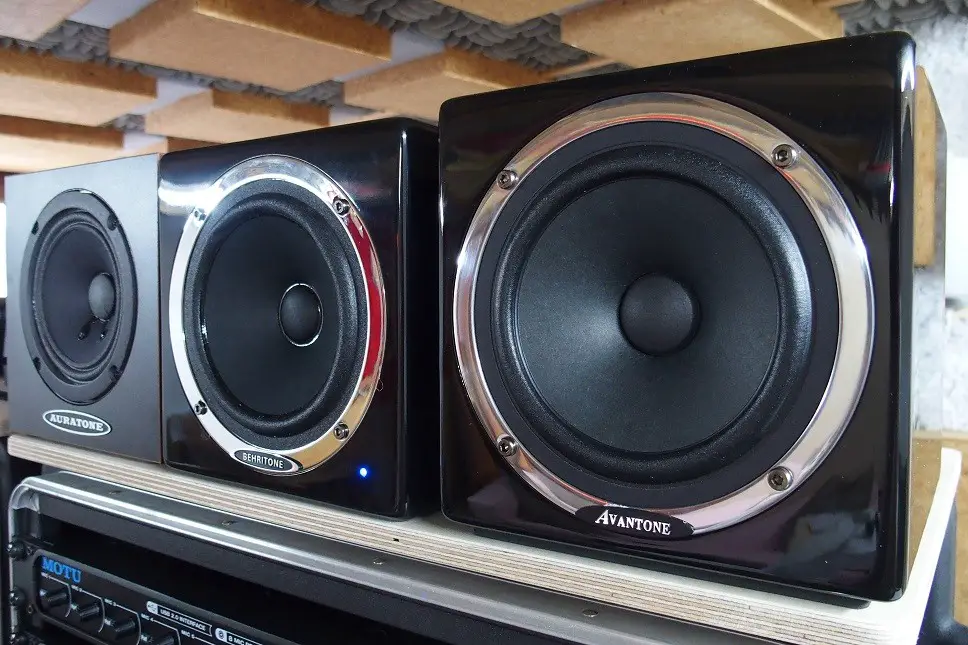Today I’ll answer the most frequently asked question by beginner and intermediate mixing engineers, which is, how to make your mix sound great everywhere.
When I was starting out I used to have the same problem, I would mix a song and it would sound great but fall flat when I test it in the car or at a friend’s house.
That used to annoy me because I would be excited to let others hear my work only to be disappointed by the quality of the song.
So, this post should help you avoid embarrassing yourself 🙂
How to Make Your Mix Sound Good on All Speakers
Let’s start with the major thing that will prevent you from making your mix sound great everywhere.
Invest in Room Treatment

This is where most, if not all, beginners fail.
The reflections of the room will interfere with what you’re hearing if you don’t have room treatment.
Reflections will get trapped in any one particular area of a room, as a result, some frequencies get amplified and others get canceled out.
The biggest mistake most musicians make is to first invest their hard-earned money in an expensive pair of studio monitors.
Instead of spending $2000 on monitors, I would rather take all that money and invest it in room treatment.
It’s even cheaper if you do it yourself.
There’s a lot of great youtube tutorials that can help you with DIY room treatment.
One other thing that is important to mention is that I’m not talking about soundproofing, I’m talking about absorption material and diffusion.
The problem with only relying on absorption is that the room will be uncomfortably dead so that’s why you’ll need both absorption and diffusion.
If you’re on a tight budget then start with absorption, especially bass traps.
Then later on invest in diffusers.
Do some proper research or hire an expert to help you get the best results.
Studio Monitor Headphones

Here’s the harsh and honest truth that the salesman at a music equipment store will never tell you, studio monitors in an untreated room are useless.
Look, you’re better off without studio monitors in an untreated room, so never buy monitor speakers if your room is not treated.
Instead, studio monitor headphones are the best option for you if you’re mixing music in an untreated room.
Another myth that has been going on for a very long time is that you can’t get a good mix with headphones, that’s a lie and it has been disapproved many times.
Even the legendary Bob Katz did give my post an approval stamp where I share the worst mixing advice out there.
In that post, I also mention mixing with headphones and Bob didn’t say it’s impossible.
So trust me, you’re better off with studio monitor headphones in an untreated room as compared to using any type of speakers.
I also wrote a blog post about mixing music with headphones, check it to make sure that you get the best results possible when using headphones.
Monitor Placement
Once you’ve treated your room the most important thing will be monitor placement.
You need to set up your desk so that your speakers are away from walls and corners. Also, make sure that you’re not anywhere close to a window.
The placement of your monitors and listening position is crucial to creating an accurate mixing environment.
The first thing you need to do is to read the manual for the monitors because some should never be placed horizontally since placing them horizontally can degrade the stereo image.
The next step is to make sure that your speakers form an equilateral triangle with your listening position.

image credits: www.thomann.de
Also, check that the tweeter should be the same height as your ears when you’re in your listening position (chair) it cannot be lower or higher.
Next up, you’ll need to get your desk at a different distance from the back wall than from the walls on either side.
That simply means if your desk is 3 feet from the left and right wall then it should be 2 feet away from the back wall.
Speaker stands are also crucial when placing your monitors.
Never put your monitors flat on the desk. Your desk will absorb and amplify certain frequencies.
The hard surface of the desk will change the tone of the speakers.
So, always put monitors on stands.
Take some time to learn about speaker placement, read the manual (not always accurate though), or hire an expert to help you out to get the best results.
Studio Monitor Size
Another mistake that musicians make is to get the wrong size of speakers.
If you’re working in a small room, then get yourself the 5” or 6,5” monitors.
Those will work best for small rooms and won’t give you reflection problems.
If you’re working in a big room then get big speakers, don’t make the mistake of getting small speakers for a big room, or the opposite.
If you’re not sure then ask the store to give you different sizes to test them out, if they don’t trust you then you’ll have to test each size one at a time to make the best choice.
Get Midrange Speakers

Once you have your room acoustic treatment done, another good investment will be to get yourself some midrange speakers.
These are speakers such as the classic Yamaha NS10s, Auratone, Avantone, Behritone, etc.
These speakers will help you get a good balance for the midrange of your mix since they have a tight midrange translation.
They’re great for the balance of midrange sounds such as the vocals, drums, and effects such as reverb.
Most of the time, when the mix is well balanced on these speakers, your mixes will sound great everywhere else.
Mix at a Low Volume
Mixing at a lower volume has more advantages as compared to mixing loud.
You will be able to mix longer, avoid ear fatigue, make better decisions, and if you can hear things clearly at a low volume the mix will sound great when you crank up the volume.
This is very important for those who have already purchased speakers in an untreated room but didn’t know that speakers require acoustic treatment.
If you’re mixing loud in an untreated room your mix will sound great in that room and fall flat when you play it anywhere outside that room.
So, your best option is to mix at a low volume because the reflections of the room will interfere with what you’re hearing.
You can use an app to measure the volume and make sure that you’re not going anywhere above 70dB in a treated room and less than 50dB in an untreated room.
If you’re mixing on headphones then stick to listening levels, this means you should be able to have a short conversation with someone without taking off the headphones.
Here's some great advice that will help you to get your music translating well on different sound systems...
Take Regular Breaks
One thing you also have to do to make your mixes sound great everywhere is to take regular breaks.
This will help you refresh your ears and avoid ear fatigue.
When you mix non-stop you run the risk of making poor decisions.
We’re not robots so our brains do get tired as well, it’s not only about the ears.
If you’re working with a client then make them understand that it’s important to take regular breaks don’t allow a client to get you to mix for 3 hours straight.
During the break, listen to similar music.
That also helps with refreshing your ears, but make sure that you’re not listening at high volumes.
I would recommend taking breaks every 40 minutes, and the breaks don’t have to be that long, they can be 15 to 20 minutes breaks.
Use Reference Tracks
Another great way to refresh your ears is to use reference tracks when mixing.
Keep switching back and forth between your mix and other reference tracks.
This is one of the best ways to make your music sound great on all speakers.
Since every song is different and captures a different feel then don’t try to get your mix to sound exactly like the reference tracks.
Instead, use the reference tracks as a guideline.
Check Your Mix in Mono
This is one suggestion that can be misinterpreted by many, when we say check your mix in mono, all we’re saying is that you have to keep switching between mono and stereo while mixing.
I’m not saying mix in mono from start to finish.
A mix is 3D and mono will only give you 2 dimensions.
So, keep going back and forth between mono and stereo after processing a sound and whenever you’re not sure about something.
When you finally get your mixes to sound great both in mono and stereo they will usually translate well in different speakers.
How Do You Know if Your Mix Sounds Good on all Speakers?
There’s no other way to know if your mixes sound great everywhere without testing.
You have to test your mixes on as many sound devices as you can.
Do a car test, play the mix on your smartphone, headphone, laptop, airpods, home theater system, etc.
Also, go to environments that you’re not so familiar with like at a friend’s place, and see if they can allow you to test on their different devices too.
Take notes of anything that still needs to be fixed during your tests then go back to the studio to fix the issues and go back to test again.
Test till you’re happy with the results.
Does Mastering Music Fix a Bad Mix?
Don’t ever make the mistake of thinking that the mastering engineer will somehow magically fix a bad mix and make it sound great.
It’s your job as the mix engineer to get it sounding the way you want.
If you do your due diligence, then it will be much easier for the mastering engineers to ensure that your mix translates well on different speakers.
But never rely too much on the mastering engineer.
The best way is to contact them and they’ll tell you if your mix is ready for mastering or not.
If a mastering engineer just accepts any mix that you send them without helping you improve some mixing issues (if there’s any) then change them because that person is not professional at all.
A good engineer always has a reputation to protect and they’ll never accept a bad mix.
Wrap
I want you to understand that you’ll get the best results if you use all the advice recommended above without picking and choosing, that’s how you’ll increase the chances of making your mixes sound great everywhere.
I also trust that everything makes sense.
After all, I couldn’t go deeper into the suggestions because each requires a dedicated blog post, especially things such as room treatment and monitor placement.
However, there’s a lot of resources online that you can check out.
Don’t be afraid or too proud to hire a specialist to help you.
One other thing you can do is to visit studios and ask for tips and suggestions about equipment setup.
Feel free to leave any suggestions and tricks that you use to make your mixes sound great everywhere, that will help the community.
